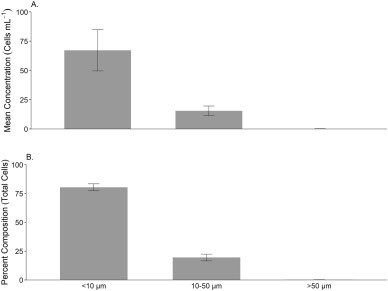Discover and read the best of Twitter Threads about #invasionslabpub
Most recents (5)
#InvasionsLabPub Alert! @SmithsonianEnv scientists Brenda Soler-Figueroa led a paper on the characteristics of global port phytoplankton and their implications for current #BallastWater regulations @sciencedirect #Thread
ow.ly/2fHi50zE29S
ow.ly/2fHi50zE29S
1/4-Thirty-one major ports in the Northern Hemisphere over a wide range of latitudes and salinities were selected to evaluate: a) how natural communities compare to challenge requirements and b) the abundance of unregulated size fractions. #BallastWater #PlanktonSampling #Thread 

2/4-Phytoplankton <10 μm comprised over 80% of total abundance and yet are unregulated. Some of the organisms in this size class pose serious threats to ecosystem, fisheries and human health. #BallastWater #PlanktonSampling #Thread 

#InvasionsLabPub Alert! @SmithsonianEnv scientist Erica Keppel led a new paper re-describing the sabellid tubeworm Parasabella fullo after our team discovered the first record of the #invasive worm on a ship hull in California. #WormWednesday #THREAD
tandfonline.com/doi/full/10.10…
tandfonline.com/doi/full/10.10…
Parasabella fullo <pic> looks remarkably similar to native CA worm P. pallida, and lacked a comprehensive description or illustration to easily decipher between the two worms. By re-describing the species, we strengthen taxonomists’ ability to id the worm in non-native habitats. 

The main dissimilarities between Parasabella fullo (invasive) and P. pallida (native) are a longer dorsal collar margin in Pf, medium-size, digitiform radiolar tips with broad flanges in Pf, and a difference in the projection of dorsal lips to lateral lamellae length (Table 2).
Today on our #citizenscience board we're discussing which inverts are easiest to ID from photos. Our recent #InvasionsLabPub showed that conspicuous taxa (large or arborescent) are best. Do you agree? Try yourself & let us know which animals you recognize fastest! #FunFactFriday 

You can check out our #InvaderID chat board and try identifying #marine #invertebrates here:
zooniverse.org/projects/serc/…
zooniverse.org/projects/serc/…
Or you can read the paper, published this week, here:
frontiersin.org/articles/10.33…
frontiersin.org/articles/10.33…
#SERCWest scientists graced the cover of the @sfchronicle yesterday morning talking about their recent article on the freshwater die-off of #invasivespecies and parts of the fouling community! 

“If you’re a manager interested in managing invasive species, you could look at this as an opportunity... Now you have a clean slate. It’s time to take aggressive management action.” -Dr. Andy Chang
Read the newspaper article here:
sfchronicle.com/bayarea/articl…
Read the newspaper article here:
sfchronicle.com/bayarea/articl…
We're rounding out our #InvasionsLabPub Alerts for the end of 2017 - here are some from the last few weeks!
First is the September @scienmag article on non-native tsunami rafters across the Pacific Ocean. science.sciencemag.org/content/357/63…
First is the September @scienmag article on non-native tsunami rafters across the Pacific Ocean. science.sciencemag.org/content/357/63…

@scienmag @WilliamsMystic @mccullermi @MLMLmarinesci Next up #invasivespecies researchers including @jcanningclode found two unreported non-native isopods in Madeira Island.
doi.org/10.1163/156854…
doi.org/10.1163/156854…

@scienmag @WilliamsMystic @mccullermi @MLMLmarinesci @jcanningclode Our @TempleUniv and @stri_panama collaboration on a #PredationExp produced this paper on how excluding some predators makes invertebrates susceptible to abiotic shifts.
onlinelibrary.wiley.com/doi/10.1002/ec…
onlinelibrary.wiley.com/doi/10.1002/ec…

